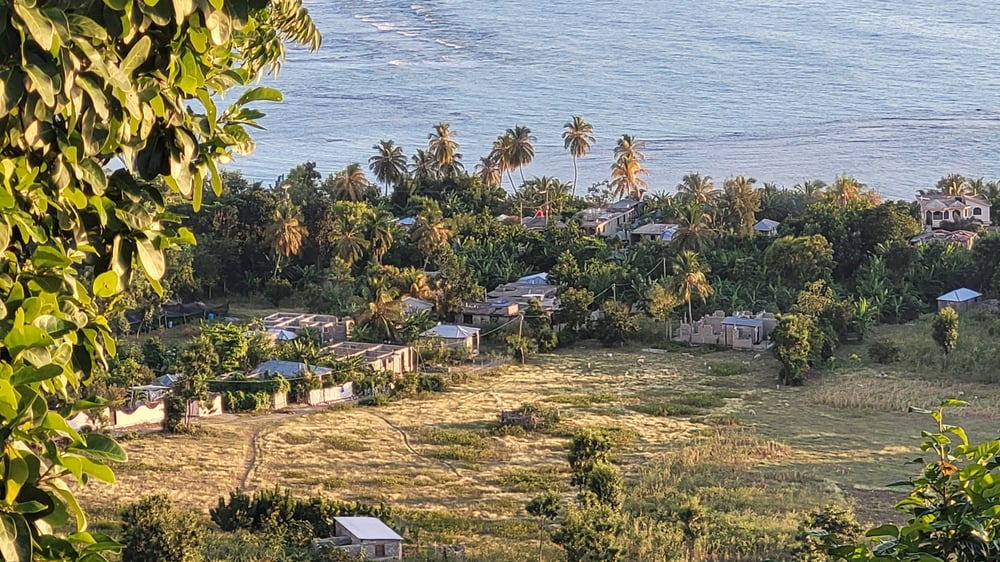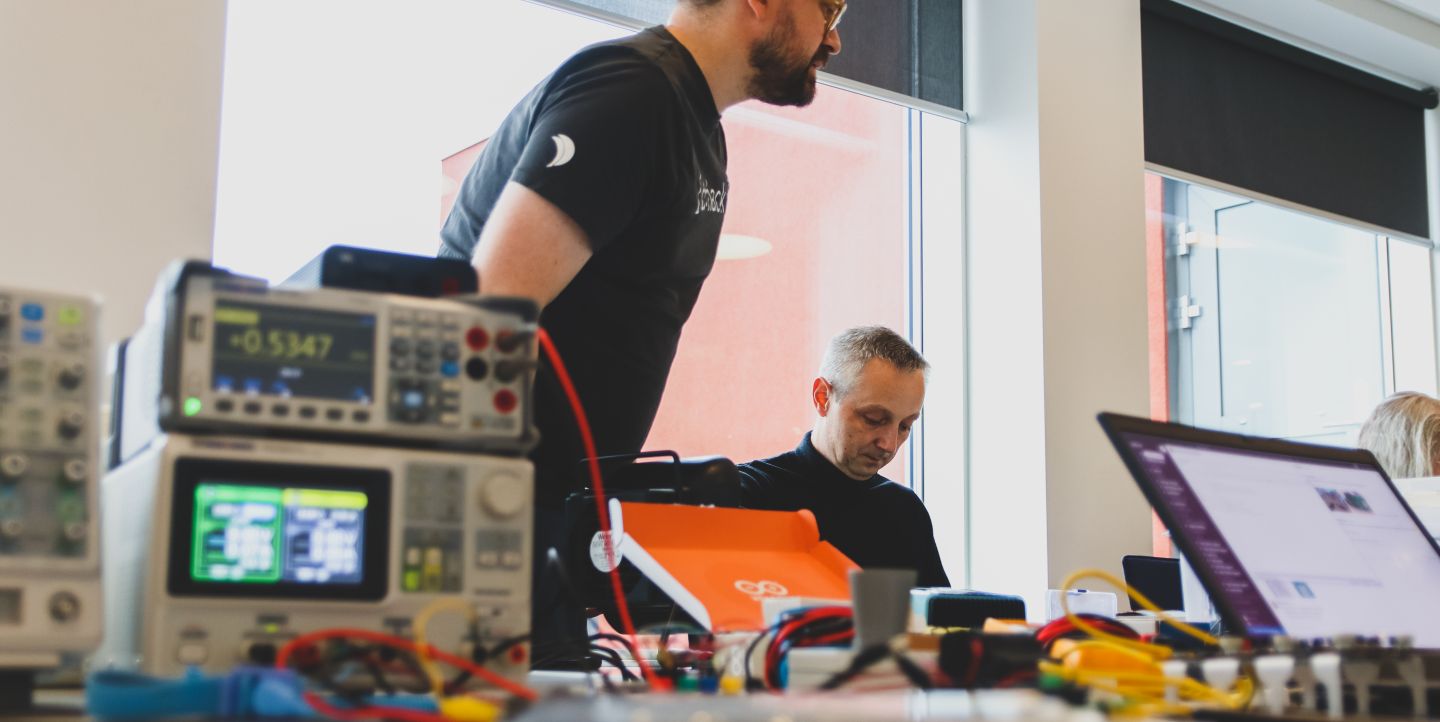Livet med Leger Uten Grenser - Meeting the Haitian people
Dato: 14. februar 2023
Sometimes people are beautiful.
Not in looks.
Not in what they say.
Just in what they are.
Markus Zusak, I Am the Messenger
DIPSer Anca Heyd har alltid hatt en drøm om å kunne bidra inn i Leger Uten Grenser og gi livreddende nødhjelp der det trengs mest. Siden 2020 har hun jobbet med feltarbeid både i Afghanistan og Jemen, og i år gikk turen til Haiti.
Les blogginnlegg 2 og blogginnlegg 3 fra turen til Haiti her.

Foto: Anca er vel fremme ved sykehuset i kledd hennes uniform.
Litt om Anca Heyd:
Anca Heyd er legespesialist i fødselshjelp og kvinnesykdommer, og jobber som medisinsk rådgiver i DIPS. Hun kommer fra Tyskland, og hadde 14 års praksis fra klinisk arbeid og 4 år i ulike ledende stillinger i Helse Nord bak seg før hun kom til oss. I mange år har hun hatt en drøm om å kunne bidra inn i Leger Uten Grenser og gi livreddende nødhjelp der det trengs mest. I 2020 satt Anca satt seg på flyet ned til Afghanistan for å jobbe med feltarbeid. I 2022 gikk turen til Jemen. Og i 2023 falt oppdraget til Haiti.
#AncaBidrar
Fra Leger Uten Grenser sine hjemmesider kan man lese at landet Haiti befinner seg i en alvorlig økonomisk og politisk krise. Helsevesenet er på randen til kollaps, og det er mange helsebehov som ikke dekkes. Haiti er et av de fattigste landene i Amerika, og landet har flere ganger blitt rammet av naturkatastrofer. Ti år etter det katastrofale jordskjelvet i 2010 og 2021 er helsevesenet på randen til kollaps. Det er mye vold og i september 2022 brøt det også ut kolera.

Blogg 1: Meeting the Haitian people
Dato: 25.01.23
Bloggen er på engelsk.

Foto: Field and houses in Couteau
I am sitting on the terrace of “Maison blanche”, the house where me and three other expat specialists of the project are living. It is 27 degrees; the sun is shining, and the sea is a clear blue. In front of me I can see the reflection of the sun in the sea and the waves rolling onto land. To my left there a beautiful church and on the other side of the road a field where 2 goats and their two small kits are looking for food and shadow. In between, a rooster is chasing chicken.
A group of young boys has gathered in the street, they are talking and laughing together, while loud music is streaming from somewhere to my right. Behind med there is a cloud of green, trees, palms and in the background the mountains, covered in clouds. It could be paradise. Only, it’s not.
 Foto: Sunset at Papim - view from the roof terrace of our house
Foto: Sunset at Papim - view from the roof terrace of our house
Natural disasters and politics
I am in Port-a-Piment, a little city in the south-western part of the Haitian peninsula. This country has had its political challenges, lots of them, and still has. Right now, there is no elected government and armed groups are reigning in the capital, a challenge that has an impact on the whole country.
On top of this the country is regularly hit by natural disasters. The big earthquake in 2010, that killed 300 000 thousand people and left 1.5 million people homeless. Then a few years later the hurricane Matthew with its devastating destructions and just two years ago another big earthquake.
Here in the south, the political situation is not a big problem. The biggest challenge is poverty, and all the people left without anything after all these disasters.

Foto: The old hospital, on the premises
Building the health center
That’s why Doctors Without Borders (MSF) opened a little health center in 2016, located in the public local hospital. While the Haitian ministry of health is responsible for the general services, MSF offered services for reproductive health. That is for example deliveries, antenatal and postnatal care, family planning, sexual violence, abortions etc.
But until recently they only offered basic services, that means that patients with complicated pregnancies or deliveries or those in need of blood transfusion or surgery still needed to be referred to other hospitals.
In the aftermath of the last earthquake, one realized that referral was very complicated and often didn’t work out, also the damage to the other hospitals was substantial. That’s why MSF decided to offer complete services included surgery, blood bank and complicated cases. These services opened exactly one month ago. It wasn’t easy. They had to build a completely new hospital, because the old one had been destroyed.
They started with the old office building and built a new maternity an operation theatre and a neonatology at the same site. Then it was the problem of getting the human resources. Because, as always in MSF project, more than 90 % of the staff are locally hired. And Port-a-Piment is a little place, in a quite secluded region. There were also some issues with the blood depot and all the other logistics, materials, pharmaceutics, sanitation etc. But, in the and they managed.

Foto: My neighbours the goats
Traces after the last earthquake
And here I am. I’ve been here for one week and still trying to digest the millions of impressions. Where to start? Every place I go there are traces of the last earthquake. All the houses are marked with red or green numbers. Green means, the house is safe, red means the house is unstable, the danger for collapse is too big and that’s why nobody should live inside.
The catholic church, a wonderful white building stands locked and empty, the red mark clear on its walls. The community center is destroyed, there are only ruins left. That is also the case for many houses. One can see a lot of red houses, locked and empty like the church, still standing but with nobody living inside.
What have the owners of these houses done? How did they move on?
Some have managed to build another, often smaller house on side of the old one. Others didn’t have the money or materials for a new stone house. They use what they have, and their preliminary houses often stand on wooden beams or branches covered with tent fabric, big plastic sheets or corrugated iron. There are also some that have chosen to stay in the red hoses, despite the risk.
The people I meet
Then, there is the people. As always, it’s them that leave the biggest impression. Haitians are wonderful. They are extremely polite and friendly and generous with their smiles. The house where I live is near the hospital, that’s why the medical staff was chosen to live here. That means, we can walk to the hospital, and this is really the best start into the day one can imagine. We are starting at about 7.30 and it’s about a 15 minutes’ walk. When we start he streets are already full of people.
Most of them are on their way to work and when we are passing, we are greeting them with the traditional creole “Bon jou, koman ou ye?” – Good morning, how are you? “Mwen bien” or “pa pi mal”
– I am fine or not that bad. Other times the people are greeting us, either in French or creole, or they wave to us. Often, we stop for a man or a woman setting up her stand for the day, where they sell their goods. Sometimes we buy small things, other times we are just talking. These stands are the way people are trading. There are nearly no shops, only stands and the marked every Saturday. Everybody we meet is smiling, everybody is friendly, everybody takes the time to answer and ask how we are, even if they are in a hurry.
Then there are the older ones, they are often sitting in front of their houses and observe the others or starting already to prepare the meals. I sometimes wonder what they are thinking. I never asked, perhaps I should. Maybe later some time, when and if my Creole gets better .

Foto: A beautiful house in the hills of Port-a-Piment
I can't stop looking at the giggling children – and they can't stop looking back
But what I love the most, what I really, really enjoy is seeing the children going to school. They are all wearing school uniforms, the boys perfectly ironed shirts and shorts, the girls, shirts and skirts with wonderful ribbons in their hair, always the same color as the shirt. The uniforms have different colors; I suppose that is the sign of the different schools.
The children are nearly always in groups, the elder one holding hands with the younger ones or with each other. They are talking or laughing or teasing each other and I just cannot stop looking at them. So do they. We are white, we have light, thin hair and we wear different clothes - we simply just don’t fit in. Some of them just can’t stop looking at us, they are really gaping. Then there are the shy ones and the courageous ones, that address us. When we are greeting them, they are always happy, some of them giggle, others show how proud they are, especially when they talk to us in French or even English. I cannot explain the gladness the sight of these children gives me.
To see them like that, going to school, full of energy, smiling, laughing, it really warms my heart and gives me hope, hope for humanity and most of all hope for the Haitian people.

Foto: The new hospital, admission and delivery.
My most important task is to teach
It is a privilege to enter the hospital with this feeling, and I try to carry it with me as long as possible. It is not difficult, because from what I have learned until now, I am working with wonderful people. Since the complete services only opened four weeks ago, things are new for most of my national colleagues.
Some midwifes have worked at the hospital for many years, but they are not used to treat the complicated patients. Those were earlier referred to other hospitals. There are also midwifes that are new. And there are no gynecologists, it was difficult to get somebody to move into this secluded part of the country. But there are 6 general practitioners, eager to get the training they need in order to manage all the obstetric and gynecologic problems that they meet.
And this is my most important work, to teach them both technical and theoretical skills and to empower them. Because it is them who will carry this institution when I and the other expats are gone. I am only here for two months, a way too short time, but I will do my very best and teach them as much as possible.
Right now, it seems an easy task, because the eagerness to learn and to do a good job in this team is just amazing, both midwives, nurses, doctors and all the others. Lucky for me, they are also willing to teach me, and I already learned lots of interesting things from them. But this will be a subject for the next blog.

Foto: Sunset at Couteau, a small city near Port-a-Piment where the other expats are living
Les blogginnlegg 2 og blogginnlegg 3 fra turen til Haiti her.



